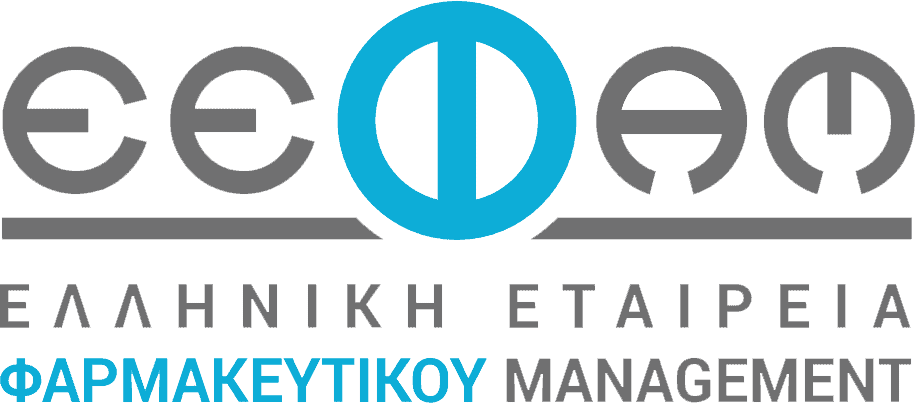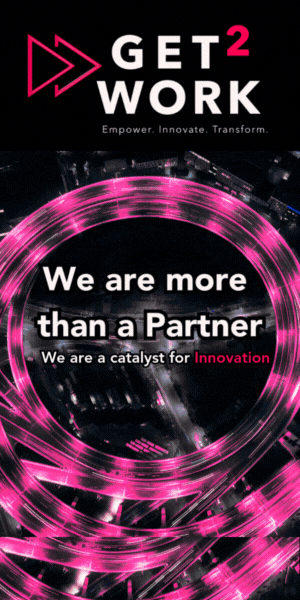Blog
Blog
The evolution of customer care: AI and the Gen Z effect

With the coming of age of Gen Z—both as customers and new workforce entrants—customer demands are evolving. At the same time, generative AI (gen AI) is transforming how contact centers respond to these demands. Forward-thinking leaders must explore the latest trends, emphasize cohesive support strategies, and take actionable steps to enhance their customer care functions, addressing challenges such as service improvement, cost reduction, and sales function integration.
In this episode of McKinsey Talks Operations, host Daphne Luchtenberg sits down with McKinsey partners Brian Blackader and Eric Buesing. Listen in as they discuss the latest trends, the importance of a cohesive support strategy, and actionable steps contact center leaders can take to improve their customer care functions.
The following conversation has been edited for length and clarity. Dates and statistics correct at time of recording in May 2024.
Daphne Luchtenberg: Every time you buy a product or service, you start or build upon a relationship with the company that stands behind it. And when something goes wrong or you just need help, the ease with which you’re able to get the support you need can have a big impact on how you feel and whether you choose to continue the relationship. With the arrival of more communication channels than ever before and the onward march of gen AI, how should organizations be thinking about where to improve their customer care functions? Throw Gen Z into the mix—with perhaps surprising preferences about how they want to engage with companies today—and you’ve got a complex landscape to navigate.
I’m delighted to be joined today by two of the people behind our recent research, “Where is customer care in 2024?,” Eric Buesing is a partner in our Charlotte office, and Brian Blackader is a partner based in Düsseldorf.
Eric, what do contact centers look like at the moment, and what are the challenges that they are facing?
Eric Buesing: The customer care function of the contact center is currently in the spotlight more than ever before, discussed even at the board level. Contact center leaders face unprecedented pressure in various forms: operational pressure to be efficient and reduce costs, enhance the customer experience, manage employees in increasingly complex environments, and expand the contact center’s role to include more advisory or consultative selling to build loyalty.
Customer expectations aren’t getting easier. With more platforms available for sharing information, disgruntled customers can amplify their dissatisfaction more loudly and broadly.
Eric Buesing: I don’t know if there’s any one organization that gets it all right all the time. At its core, good service involves excelling in the moments that truly matter—those critical times when customers are most in need. In these moments, the goal is to delight them in a way that impresses, garners loyalty, and resolves their issues, while generally maintaining good service overall.
Good service is characterized by several key aspects: the ease of resolving issues, the accessibility of information, and the integration of communication channels so that every interaction contributes to a cohesive resolution process.
Brian Blackader: Adding to that, what good looked like a few years ago, especially during the pandemic, has changed. Back then, simply being available was often enough. Now, we’ve returned to fundamental principles like solving problems effectively and knowing the customer across different touchpoints. Expectations have risen; customers now expect not just solutions, but also personalized understanding and engagement.
Eric Buesing: Absolutely, Brian. The principles of, “Know me, know my issue, and understand me,” are easily said and very difficult to achieve. The organizations that manage to do well in this area invest considerable effort in understanding how to meet these expectations. It’s not a game you win. It’s a game you play. You’re always trying to get better.
Daphne Luchtenberg: It’s interesting to see leaders turning to gen AI tools across various business operations, particularly in business services and customer care. Could you elaborate on the potential for adopting these tools in these areas and how they might enhance the services you described?
Eric Buesing: We’re about 16–17 months into the era of gen AI being available to the wider public. From my perspective, gen AI promises significant disruption, particularly in service functions. I believe that it could reduce current phone volumes by 50 percent within five years. However, the initial progress has been slower than expected. Many believed that gen AI would quickly reduce call volumes and transform customer interactions, but that hasn’t been the case yet. Few organizations have implemented gen AI at a scale where its impact can be effectively measured, and it’s crucial to understand why.
Despite the technological advances, the need for human interaction remains critical, especially for empathy and connection. I do see gen AI playing a significant role in efficiently resolving complex customer issues. We’re likely to see an increase in interactions with chatbots and virtual voice assistants, which will provide quicker, more accurate responses. However, the moments that truly matter will still require a human touch.
Additionally, foundational elements such as data connectivity, data quality, and the technical systems needed to deploy these AI capabilities are also vital. It’s important to recognize that it’s never just tech; early strategic planning and implementation are key to leveraging these tools effectively.
Daphne Luchtenberg: Eric, considering we’re recording this session, could you discuss the role of recording live conversations and how this might enhance intelligence and optimize the call center experience in the future?
Eric Buesing: First, the concept of speech-to-text isn’t new; organizations have been recording conversations for years. However, there’s been a shift in expectations regarding the quality of insights derived from these recordings, moving toward what’s now often referred to as conversational or voice intelligence. This advancement is crucial as it helps organizations explore the root causes of customer calls. Generative AI plays a significant role here, particularly with the concept of multi-intent. This means recognizing that customer calls are complex and cannot be simply categorized as, for example, a “billing call” or a “policy inquiry.” Conversational intelligence enables organizations to understand the multiple reasons behind a customer’s call, which in turn helps in resolving issues more effectively and proactively sharing information across the organization to prevent future frustrations.
There’s potential to use customer care data beyond traditional confines, such as for improving product design or service delivery to reduce customer friction. This approach involves leveraging voice data more strategically than just for compliance and quality assurance.
Brian Blackader: Adding to Eric’s point, while many discuss using these insights for training models, the reality is that many organizations still have a basic understanding of why customers call. Often, the primary reason logged is simply the first option an agent selects from a dropdown menu. It’s vital to understand not just the primary reason for a call but also the second-, third-, fourth-, or fifth-level intent. This understanding is crucial for two reasons: it helps address root causes throughout the organization and enables more targeted training for agents on specific recurring issues, rather than a general overview of a category like billing. We can really be specific on the issue that they’re struggling with.
Daphne Luchtenberg: With the technological advancements in customer care, there’s also a growing need for new skills. Brian, could you expand on the talent challenges that customer care leaders are currently facing?
Brian Blackader: There are two main challenges that care leaders face regarding talent. First, in countries like Germany where I am, or even in the US, there’s a general labor shortage. This makes it difficult to recruit people who can handle increasingly complex issues, especially as simpler tasks become automated. The challenge is not only to find frontline talent but also to enable them to address these complex queries effectively, all while striving to provide excellent customer service amid rising expectations.
Second, the traditional customer care path, where an agent progresses to a team leader, and then to a business unit manager, has been effective for developing people managers for the past 25–30 years. However, this pathway doesn’t necessarily produce the specialized skills needed today, such as data scientists, engineers, or developers. Leaders need to consider how to attract individuals with these skills to the agent level, perhaps targeting students with backgrounds in these areas. Additionally, they must make roles in customer care appealing compared with opportunities in big tech and other industries, where demand for these skills is also high.
Daphne Luchtenberg: That’s interesting. Let’s talk more about the talent pipeline. As Gen Z matures into consumers and the workforce of the future, their perspectives and behaviors might differ from previous generations. I found your insights in the blog post “Why your kids aren’t calling you, but they are calling their bank” particularly interesting, where you noted that some expected trends aren’t necessarily holding true. Could you expand on that?
Brian Blackader: Our research revealed some surprising findings about Gen Z’s communication preferences with companies. Contrary to what might be expected, their behavior isn’t drastically different from millennials, Gen X, or even boomers. When facing an unsolvable problem, about 70 percent of Gen Z individuals prefer to make a phone call, a share similar to older generations. This preference changes when it comes to personal communications, such as contacting friends or family, where they favor texting or messaging apps. However, for serious issues with services like banking or telecommunications, they still turn to phone calls. This indicates that companies that can effectively resolve issues through voice bots and provide excellent experiences will likely outperform their competitors.
Eric Buesing: Adding to that, our research also touched on email preferences across different customer segments. Surprisingly, about 70 percent of customers still prefer using email to resolve issues, despite its decreasing popularity among organizational leaders. Leaders often consider email a challenging channel to manage because it’s hard to track and measure compared with phone or chat interactions. This creates a disconnect, as customers appreciate the asynchronous nature of email—it allows them to send a message at their convenience, while someone else works on the issue later. This discrepancy poses challenges for organizations as they plan future communication strategies.
Brian Blackader: Exactly, and there’s an additional layer to this when considering people’s preferences during work or school hours, where email is particularly favored for its convenience. Additionally, our work in financial services highlighted another unique aspect of Gen Z, especially in the premium segments. Unlike millennials, Gen Z individuals in these segments expect high levels of service, akin to what baby boomers expect. They view phone service as a justified expectation for the fees they pay, demanding quality assistance and a positive experience as part of their service package. This insight is crucial for businesses aiming to cater to this demographic effectively.
Daphne Luchtenberg: It seems like some aspects of customer service are evolving significantly, while others remain unchanged. What do you envision for the future of customer contact centers?
Eric Buesing: As I’ve noted before, I expect a significant shift toward self-service options, predicting that 50 percent of current phone volumes will transition to these channels within the next five years. This shift will likely be driven by improvements in how customer issues are addressed, enhancing interactions with chatbots and virtual assistants to a more meaningful level. Some enthusiasts even believe that virtual voice assistants will become more empathetic than humans, as they won’t carry frustrations from previous interactions. Looking ahead, I’m optimistic about the improvements in service quality. There’s a prevailing acceptance of mediocre service when people call in, often expecting delays and potentially unhelpful responses. However, I foresee a future where service excellence becomes a hallmark of distinguished brands, significantly influencing customer loyalty and brand preference.
Simultaneously, the importance of human interaction will not diminish, especially for critical service moments. If phone volumes reduce by half, the quality and impact of the remaining interactions will become more crucial. I envision a future where customer service agents evolve into “superagents” or “journey managers,” equipped with advanced tools to provide informed, accurate, and empathetic support.
Daphne Luchtenberg: That sounds promising. Brian, would you like to add anything?
Brian Blackader: To summarize, I believe that leading organizations will focus on three key areas over the next five to ten years. First, they will streamline resolutions and enhance self-service capabilities for simpler issues, leaving more complex matters to customer service. Second, echoing Eric’s point, these organizations will empower their agents—whom we might call super agents—with sophisticated tools that aid in resolving customer issues effectively, fostering loyalty, and delivering exceptional experiences, possibly even with minimal training.
Lastly, the concept of an omnichannel experience will be crucial. While this has been discussed for over a decade, truly successful organizations will offer a seamless customer experience across all platforms—whether in-store, over the phone, through chat, or even via underused channels like video, and potentially augmented or virtual reality for specific scenarios. This consistency will ensure that no matter how a customer chooses to interact with a company, the great ones will be able to make sure that that experience is consistent across all the different ways you might contact them.
Eric Buesing: Brian, I really appreciate the concepts of omnichannel and optichannel, which refers to using the optimal channel for resolving issues. Currently, customers face a confusing array of options—social media, YouTube, websites, apps, calls, chats, and more. It’s not transparent which channel is best for their needs, leading to random choices. However, with the optichannel approach, it will become clear to customers which channel is most effective for their specific issues.
Daphne Luchtenberg: So, this would also mean that customers will grow more sophisticated at selecting the right tools for their needs, correct?
Eric Buesing: Exactly. It boils down to whether it’s simpler to handle an issue ourselves or to call for help. As long as calling remains the easier option, that’s what people will choose.
Daphne Luchtenberg: We’ve discussed many important points today. Before we conclude, Eric, where should leaders look for inspiration as they move forward?
Eric Buesing: Leadership in this area really requires courage. I’m often underwhelmed when we are asked, “Hey, do you have a North Star vision? What do you want out of your customer care, your servicing function?” The answers are often very incremental: “I’d love to see a 5 percent improvement in this. I’d like our budgets to be down, our handle times to go down, and our customer satisfaction score to go up slightly.”
We need to think bolder than that. Being a courageous leader means having a plan and setting an aspiration that is difficult and makes people uncomfortable, and then seeing it through. It’s one thing to say, “Hey, we want to cut our volume by 50 percent.” It’s another challenge to actually go after it.
In many ways, it requires collaboration outside of the contact center. The contact center is the receiver of somebody else’s problem. There has been a breakdown somewhere else in the customer journey, either by a product that didn’t deliver, a service that didn’t meet expectations, or an experience that was subpar. That drives volume.
So how do we look upstream and tackle those issues? How do we bring together the organizations or business units within an organization that need to come together to resolve them?
Daphne Luchtenberg: Yeah, I love that. Brian, what do you think?
Brian Blackader: In my interactions with customer care leaders, I’ve noticed they typically align with one of two approaches. The first group is action-oriented; they want to start immediately and tackle tasks head-on. The second group prefers to strategize, aiming to develop a North Star vision and a detailed road map, as Eric mentioned. It’s crucial to combine both approaches.
Creating a North Star vision and a road map is essential to avoid merely making incremental changes and to thinking in the long term. This involves making necessary investments and managing change over time. However, it’s also important to recognize that presenting such plans isn’t new to boards, and there might be limited patience for long-term results. Therefore, I advise leaders to also focus on achieving quick wins. By demonstrating early successes, you can build credibility within the organization and show tangible progress.
Additionally, I want to emphasize the importance of voice communication. Despite advancements in technology like chatbots, many customers still prefer calling. If these calls go unanswered, customers might escalate issues to regulators. With today’s technology nearing the capability to automate voice interactions effectively, there’s a significant opportunity to enhance customer experiences through this channel.
Eric Buesing: Adding to Brian’s points, another aspect we briefly touched on is transforming the role of contact centers from purely service-oriented to also encompassing sales. While “sales” can sometimes be perceived negatively, it shouldn’t be feared. Customers expect a high level of service that not only addresses their immediate issues but also anticipates their needs. This could involve better use of current products or introducing superior ones. The contact center is uniquely positioned to not just solve problems but also to provide valuable advice and recommendations. This shift from aggressive selling to thoughtful consultation can significantly enhance customer satisfaction and loyalty.
Daphne Luchtenberg: Fantastic, Eric. I couldn’t have said it better myself. Thank you so much.
Here’s a few things that I loved about the conversation today to think about as we close: first, this idea that customer service and contact centers are not a game you win, but rather a game you choose to play. Secondly, that gen AI is changing that game, albeit not as quickly as we might have expected, including through ways such as voice automation. And finally, there’s no better place in the contact center to build and deepen customer relationships and to give them better experiences during those moments that really matter.
ABOUT THE AUTHOR(S)
Brian Blackader is a partner in McKinsey’s Düsseldorf office, and Eric Buesing is a partner in the Charlotte office. Daphne Luchtenberg is a director of communications in the London office.
Be part of the conversation with McKinsey Talks Operations. Learn more and register for events with our Operations experts here.






